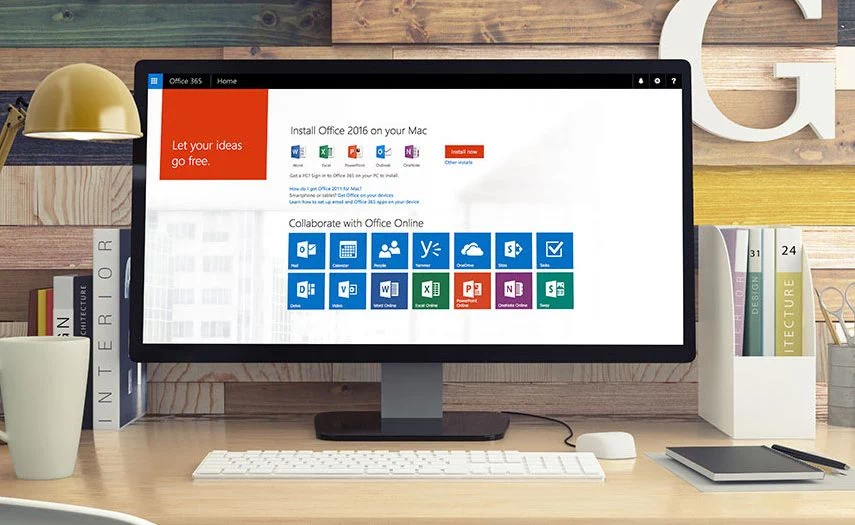Technology is an integral part of both our professional and personal lives. Even when you don’t specialise in this area, you’ll often come across technical jargon and acronyms that you’re not familiar with. This can be frustrating especially when you’re working on a new project or deciding on hardware or software purchases. To make life easier for you, we’ve compiled a comprehensive glossary of common tech terms. Bookmark this page so you can refer back to it whenever you come across a confusing tech term.
A
Algorithm
A process or set of rules to be followed in calculations or other problem-solving operations, especially by a computer.
API (Application Programming Interface)
A set of commands, functions, protocols, and objects that programmers can use to create software or interact with an external system.
Artificial Intelligence (AI)
The theory and development of computer systems able to perform tasks normally requiring human intelligence, such as visual perception, speech recognition, translation between languages and decision-making.
Augmented Reality
A technology that superimposes a computer-generated image on a user’s view of the real world, thus providing a composite view.
Authentication
The process or action of verifying the identity of a user or process.
B
Back End
The part of a computer system or application that is not directly accessed by the user, typically responsible for storing and manipulating data.
Big Data
Extremely large data sets that may be analysed computationally to reveal patterns, trends, and associations, especially relating to human behaviour and interactions.
Blockchain
A system in which a record of transactions made in bitcoin or another cryptocurrency are maintained across several computers that are linked in a peer-to-peer network.
Bandwidth
A measurement of the amount of data that can be transmitted over a network at any given time.
Business Intelligence (BI) Software
Software that is designed to analyze business data to improve decision-making and optimal deployment of resources within an organisation.
C
Cache
A set of files saved on your hard disk that help your browser display pages you have already visited more quickly.
Central Processing Unit (CPU)
The part of a computer in which operations are controlled and executed.
Applications and services hosted over the Internet, in which all data is stored, managed, and processed from off-site servers.
Cloudsourcing
When companies outsource their IT services via the internet and cloud-based platforms. Advantages of cloudsourcing include lower costs and increased access to services.
Content Delivery Network (CDN)
A collection of servers located in different areas. CDNs are designed to quickly provide content to users, avoid overtaxing a single server and limit damage in the event of a cyberattack.
Cookie
A small piece of information you may be asked to accept when connecting to certain servers via a web browser. It is used throughout your session as a means of identifying you. A cookie is specific to and sent only to the server that generated it.
D
Database
A structured set of data held in a computer, especially one that is accessible in various ways.
Data Centre
A large group of networked computer servers typically used by organizations for the storage, processing, or distribution of large amounts of data.
Debug
The process of identifying and removing errors from computer hardware or software.
Dedicated Hosting
When a single website is run and maintained on a single server.
Defragment
To reduce the fragmentation of (a file) by linking parts stored in separate locations on a disk.
Policies and procedures that aim to protect an organization from the effects of majorly disruptive events such as cyberattacks or natural disasters.
Disruptive Technology
A new technology that surprisingly displaces an already established one.
Domain Name Servers (DNS)
The system that automatically translates Internet addresses to the numeric machine addresses that computers use.
Dongle
A small device that can be connected to and used with a computer, especially to allow access to wireless broadband or use of protected software.
Dual Processor
Refers to a computer with two separate processors that work in tandem to process data. This allows the computer to perform faster than a similar machine with only one processor.
E
Encoding
The process of converting data from one form to another. There are several types of encoding, including image encoding, audio and video encoding, and character encoding.
Encryption
The manipulation of data to prevent accurate interpretation by all but those for whom the data is intended.
Ethernet cable
An Ethernet cable is a common type of network cable used with wired networks. Ethernet cables connect devices such as PCs, routers, and switches within a local area network.
Executable file
An executable file is a type of computer file that runs a program when it is opened. This means it executes code or a series of instructions contained in the file.
Export
Transfer (data) in a format that can be used by other programs.
External Hard Drive
A portable storage device that can be attached to a computer via cable connection, or wirelessly. External hard drives typically have high storage capacities and are often used to back up computers or serve as a network drive.
F
Fiber optic cable is a high-speed data transmission medium. It contains tiny glass or plastic filaments through which digital data is transmitted via rapid pulses of light.
File Server
A file server is a server that provides access to files. It acts as a central file storage location that can be accessed by multiple systems.
Firewall
A software or hardware that monitors traffic to and from your network and blocks any types of unauthorised traffic.
Firmware
Permanent software programmed into a read-only memory on a hardware device. It provides the necessary instructions for how the device communicates with the other computer hardware.
G
Gateway
A device used to connect two different networks, especially a connection to the Internet.
Gigabyte
A measurement of storage capacity or file size. One gigabyte is equivalent to 1,000 megabytes.
Graphics Processing Unit (GPU)
A computer chip that performs rapid mathematical calculations, primarily to render images.
H
Hardware
Refers to the physical parts of a computer and related devices. Examples include motherboards, hard drives, RAM, monitors, keyboards, mice, printers, and scanners.
Hostname
A label that identifies a hardware device, or host, on a network. Hostnames are used in both local networks (LANs) as well as wide area networks like the Internet.
Hyperlink
A word, phrase, or image that you can click on to jump to a new document or a new section within the current document.
Hypertext Markup Language (HTML)
The language used to create webpages. “Hypertext” refers to the hyperlinks that an HTML page may contain. “Markup language” refers to the way tags are used to define the page layout and elements within the page.
Hypertext Transfer Protocol (HTTP)
The standard protocol modern web browsers and the web itself uses to transfer data over the web.
I
IaaS (Infrastructure as a Service)
A service provided via cloud computing that offers companies use of a basic computing platform. This often includes the hardware and virtual machine, or hardware and operating system.
Index
A list of data, such as a group of files or database entries. It is typically saved in a plain text format that can be quickly scanned by a search algorithm.
Internal Hard Drive
An internal hard drive is a hard drive that resides inside the computer. Most computers come with a single internal hard drive, which includes the operating system and pre-installed applications.
Internet of Things (IoT)
An umbrella term that refers to anything connected to the Internet. It includes traditional computing devices, such as laptops, tablets, and smartphones, but also home appliances, automobiles, wearable electronics, security cameras, and many other things.
Intranet
A private network that can only be accessed by authorized users. An intranet is designed for internal communications.
IP Address
A unique address that identifies a device on the Internet or a local network.
J
JavaScript
A programming language commonly used in web development. It is designed to add dynamic and interactive elements to websites.
Jumper
A jumper is a small metal connector that acts as an on/off switch. Multiple jumpers are often used together to configure settings for a hardware device.
L
Local Area Network (LAN)
A small network that’s confined to a local area. For example, your home network or an office network is a LAN. Connects a group of computers to share resources such as programs, documents, or printers.
Localhost
The hostname “localhost” refers to the device that a program is running on. The localhost needs to be defined when running programs from multiple computers.
Log File
A file that contains a list of events, which have been “logged” by a computer. Log files are often generated during software installations and are created by Web servers.
M
Machine Learning
A type of artificial intelligence (AI) that “learns” or adapts over time. Instead of following static rules coded in a program, ML technology identifies input patterns and contains algorithms that evolve over time.
Mail Server
A computer system that acts as a virtual post office. The server stores incoming mail for distribution to local users and sends out outgoing messages.
Malware
Short for “malicious software,” malware refers to software programs designed to damage or do other unwanted actions on a computer system. Examples of malware include viruses, worms, trojan horses, and spyware.
Meta Tag
This is a special HTML tag that is used to store information about a Web page but is not displayed in a Web browser. Many search engines use the information stored in meta tags when they index Web pages.
Modem
A hardware component that allows a computer or another device, such as a router or switch, to connect to the Internet.
N
Network
A group of interconnected computers capable of exchanging information. A network can be as few as several personal computers on a LAN or as large as the Internet, a worldwide network of computers.
Network Adapter
A device that connects your computer to a network; also called an adapter card or network interface card.
Network Attached Storage (NAS)
A typical computer stores data using internal and external hard drives. If the computer is connected to a network, it can share data on its connected hard drives with other systems on the network.
O
Open Source
When a program’s source code is freely available to the public. Unlike commercial software, open-source programs can be modified and distributed by anyone and are often developed as a community rather than by a single organization.
Software that communicates with the hardware and allows other programs to run. It is comprised of the system software, or the fundamental files your computer needs to boot up and function.
Output
Refers to data that is generated by a computer. This includes data produced at a software level, such as the result of a calculation, or at a physical level, such as a printed document.
P
Peripheral
Any external device that provides input and output for the computer. For example, a keyboard and mouse are input peripherals, while a monitor and printer are output peripherals.
A criminal method of trying to gather personal information such as usernames, passwords and credit card details, using deceptive e-mails and websites.
Plug-in
An add-on for a program that adds functionality to it. For example, A browser plug-in (such as Macromedia Flash or Apple QuickTime) allows you to play certain multimedia files within your Web browser.
Portal
A website or web page providing access or links to other sites. Internal portals are designed to provide services within an organization, while external portals serve as a starting point for browsing the web.
Proprietary Software
Software that is not open source or freely licensed. Examples include operating systems, software programs, and file formats.
Proxy
A router or computer system that disrupts the connection between the sender and receiver. Proxy servers help ensure the security of private networks by evaluating requests for access.
S
SaaS (Software as a Service)
Software that is rented and deployed over the Internet rather than installed on a computer.
Safe Mode
A way for the Windows operating system to run with the minimum system files necessary. Sometimes, Windows may not fully load after an unexpected crash and the only way to get the computer to boot is to use Safe Mode.
Sandboxing
A software management strategy that isolates applications from critical system resources and other programs. It provides an extra layer of security that prevents malware or harmful applications from negatively affecting your system.
Serial Port
A type of connection on PCs that are used for peripherals such as mice, gaming controllers, modems, and older printers.
Server
A computer that provides data to other computers. It may serve data to systems on a local area network (LAN) or a wide area network (WAN) over the Internet.
Session
Refers to a limited time of communication between two systems. Some sessions involve a client and a server, while other sessions involve two personal computers.
Site Map
An overview of the pages within a website. Site maps of smaller sites may include every page of the website, while site maps of larger sites often only include pages for major categories and subcategories of the website.
Spider
A software program that travels the Web locating and indexing websites for search engines. All the major search engines, such as Google and Yahoo!, use spiders to build and update their indexes.
Syntax Error
An error in the source code of a program. Since computer programs must follow strict syntax to compile correctly, any aspects of the code that do not conform to the syntax of the programming language will produce a syntax error.
System Unit
The system unit, also known as a “tower” or “chassis,” is the main part of a desktop computer. It includes the motherboard, CPU, RAM, and other components. The system unit also includes the case that houses the internal components of the computer.
T
Task Bar
The bar that spans the bottom of the screen and contains the Start button on the left side and the current time on the far-right side. It can also hold shortcuts to programs directly to the right of the Start button.
Teleconference
A meeting of people in different locations using telecommunications. A basic teleconference may only include audio, while other types of teleconferences may include video and data sharing.
Thumbnail
A small image that represents a larger one. Thumbnails are often used to provide snapshots of several images in a single space.
U
Uniform Resource Locator (URL)
The address of a specific webpage or file on the Internet. While all website URLs begin with “Http,” several other prefixes exist.
Universal Serial Bus (USB)
A connector on the back of almost any new computer that allows you to quickly and easily attach external devices such as mice, joysticks, printers, scanners, modems, speakers, webcams, or external storage devices.
Utility
Software programs that add functionality to your computer or help your computer perform better. These include antivirus, backup, disk repair, file management, security, and networking programs.
V
A computer operating system that does not run directly on the endpoint hardware from which a user accesses it.
Virtual Machine
An emulated computer system created using software. It can be easily created, modified or removed without affecting the host computer.
Virtual Reality
The computer-generated simulation of a three-dimensional image or environment that can be interacted with in a seemingly real or physical way by a person using special electronic equipment, such as a helmet with a screen inside or gloves fitted with sensors.
Virus
Small programs or scripts that can negatively affect the health of your computer. These malicious little programs can create files, move files, erase files, consume your computer’s memory, and cause your computer not to function correctly.
Voice Over Internet Protocol (VoIP)
A telephone connection over the Internet. The data is sent digitally, using the Internet Protocol (IP) instead of analogue telephone lines.
VPN (Virtual Private Network)
A private network that allows remote employees to securely access internally used data, applications and systems.
W
Web Application
A software program that runs on a web server. Unlike traditional desktop applications, which are launched by your operating system, web apps must be accessed through a web browser.
Web Host
To publish a website online, you need a Web host. The Web host stores all the pages of your website and makes them available to computers connected to the Internet.
Web Server
A computer system that hosts websites. It runs Web server software, such as Apache or Microsoft IIS, which provides access to hosted webpages over the Internet.
Workstation
Refers to a computer (and often the surrounding area) that has been configured to perform a certain set of tasks, such as photo editing, audio recording, or video production.
Wi-Fi
A wireless networking technology that allows computers and other devices to communicate over a wireless signal.
Wi-Fi Protected Access (WPA)
A security protocol designed to create secure wireless (Wi-Fi) networks.
Sources:
http://www.techterms.com
https://www.lexico.com
https://www.techopedia.com
https://www.webopedia.com
https://online.husson.edu





